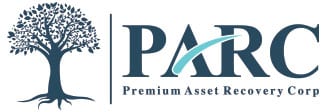Navigating Self-Pay Medical Debt: Tips for Patients

Non-Recourse Debt Buyers: Who They Are and Why They Matter
November 1, 2023
Revenue Cycle Management (RCM): A Step-by-Step Guide for 2024
November 14, 2023Introduction
Navigating through self-pay medical debt can be daunting for patients and providers alike. Premium Asset Recovery Corporation (PARC) is here to offer clarity and guidance in this intricate area. This guide aims to assist both parties in understanding and efficiently managing self-pay medical debt, creating a smoother experience for all involved.
Self-Pay: A Growing Trend
We’ll start by addressing the rise of self-pay patients and exploring its implications for healthcare providers who are adapting to this emerging trend.
Strategies for Collections
Then, we’ll outline practical strategies for providers to streamline their self-pay collections, emphasizing the crucial role of clear communication.
Flexible Payment Options
Lastly, an exploration into the benefits of flexible payment options will demonstrate how these can ease the financial burden on patients while ensuring providers receive timely payments.
The Rise of Self-Pay Patients and Its Implications for Healthcare Providers
A Shift Toward Self-Pay
The healthcare landscape is experiencing a noticeable shift, with more patients taking on greater financial responsibility for their medical expenses. This transformation is primarily due to the rapid increase of high-deductible health plans and the rise in uninsured individuals. As a result, healthcare providers are observing a substantial growth in the number of self-pay patients.
Financial Implications for Providers
This surge in self-pay patients poses financial challenges to healthcare providers. Traditionally, providers collected the majority of their revenue from insurance companies. With the rise of self-pay, providers now have to navigate a more complex collection process, often dealing directly with patients. This change necessitates revisions in billing practices and collections strategies to maintain a healthy revenue cycle and avoid distressed debt scenarios.
Strained Patient-Provider Relations
Beyond finances, the rise of self-pay can also strain the delicate relationship between patients and providers. Financial discussions and debt collections are typically sensitive subjects, and managing them poorly may lead to dissatisfaction and mistrust among patients, impacting the provider’s reputation.
The Need for Adaptation
Given these challenges, healthcare providers must adapt their financial policies, communication strategies, and billing processes. Implementing transparent, patient-friendly practices is crucial in facilitating smoother transactions, enhancing patient satisfaction, and securing the provider’s financial stability during this period of growing self-pay medical debt.
Healthcare Providers Strategies to Facilitate Self-Pay Collections
Transparent Communication
A foundational strategy to facilitate self-pay collections is to engage in transparent and open communication with patients. From the start, providers should clearly explain the costs associated with medical services and discuss the available payment options. Transparency not only fosters trust but also empowers patients to make informed decisions regarding their healthcare expenses, minimizing surprises and disputes down the line.
Easy Billing Processes
Simplifying the billing process is another key approach. Simplified invoices, accessible online billing systems, and straightforward payment procedures encourage patients to settle their accounts quickly. Complexity in billing often leads to delays and confusion; hence, streamlining this aspect is crucial for efficient collections.
Flexible Payment Plans
Offering flexible payment plans is an effective strategy for accommodating patients with varying financial capacities. Flexible plans allow patients to pay their medical debts in manageable installments, making it financially feasible for them while ensuring providers receive consistent payments over time.
Early Financial Counseling
Implementing early financial counseling for patients is also beneficial. Financial counselors can guide patients through their payment options, insurance coverage, and available financial assistance programs. This proactive support aids patients in navigating their financial responsibilities, reducing the likelihood of unpaid medical debts.
Third-Party Collaboration
Collaborating with experienced third parties like medical debt buyers or agencies specializing in medical debt collections can also be advantageous. These entities have the expertise and resources to manage the collections process efficiently, allowing healthcare providers to focus on delivering quality care without being bogged down by the financial aspects.
Facilitating self-pay collections efficiently requires a combination of clear communication, simplified billing, flexible payment options, proactive financial counseling, and strategic collaborations. Implementing these strategies helps healthcare providers navigate the challenges posed by self-pay medical debt while maintaining a positive relationship with their patients. In our next segment, we’ll explore the benefits of clear communication and flexible payment options in more detail, providing deeper insights into these critical strategies.
Benefits of Clear Communication and Flexible Payment Options
Fostering Patient Trust with Clarity
Clear communication goes beyond just informing patients about their financial responsibility. It’s about creating a dialogue where patients feel comfortable asking questions and expressing their concerns. This transparency fosters a trusting relationship, which is essential for positive patient experiences and long-term patient retention. When patients comprehend their financial obligations and feel supported, they are more likely to actively settle their accounts.
Consistent Revenue Stream
Secondly, from the provider’s perspective, combining clear communication and flexible payment options contributes to a more consistent and reliable revenue stream. This approach minimizes the uncertainty and delays associated with self-pay collections, helping stabilize the practice’s financial health.
Conclusion: Navigating the Landscape of Self-Pay Medical Debt
Forward Together
The challenges posed by self-pay medical debt are significant, but they can be effectively overcome with careful planning, open communication, and a commitment to flexibility and understanding. By adopting patient-centered strategies, healthcare providers can foster a positive and supportive environment where patients feel empowered to take control of both their health and their finances.
Final Thoughts
As we conclude our guide, remember that the landscape of healthcare financing is complex, but you’re not alone. Whether you’re a healthcare provider seeking effective collection strategies or a patient looking to understand your financial responsibilities, resources, and support are available to help you. Premium Asset Recovery Corporation (PARC) is dedicated to providing the guidance and expertise needed to successfully navigate the challenges of self-pay medical debt. Together, we can work towards a future where medical debt is manageable and quality healthcare is accessible to all.


